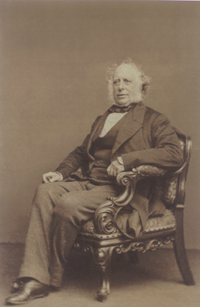Discover the historic 1849 annexation of Punjab by the British, ending Sikh rule. Unveil the events that led to this pivotal moment in India's history.
CURRIE, SIR FREDERICK (1799-1875), diplomat, son of Mark Currie, was born on 3 February 1799. He came out to India in 1820, and served in various capacities in the civil and judicial departments before being appointed a judge in the North-West Frontier Province. He became foreign secretary to Government of India at Fort William in 1842. During the first Sikh war (1845-46), he remained with Governor General Lord Hardinge and was instrumental in arranging with the Sikhs the terms of the first treaty of Lahore.
DALHOUSIE MUNIMENTS, a classified and catalogued collection of Lord Dalhousie`s official, demi official and private papers and diaries, preserved at the Scottish Record Office, Edinburgh. These are a part of the vast collection of Dalhousie papers which were deposited in the Scottish Record Office in 1951, and placed in the Gifts and Deposits series.
DALHOUSIE, JAMES ANDREW BROUN RAMSAY, First Marquis of (1812-1860), Governor General of India (1848-56), son of George (1770-1838), the ninth Earl in the peerage of Scotland, was born at Dalhouse Castle on 22 April 1812. He was educated at Harrow and at Christ Church, Oxford. He succeeded his father to the peerage in 1838 and became member of the House of Lords. In 1845, he became president of the Board of Trade. In 1846, he declined a post in the British cabinet under Sir Robert Peel.
GOUGH, SIR HUGH (1779-1869), commander of the British armies in the first and second Sikh wars, was born on 3 November 1779, at Wood town, Limerick, Ireland. He joined British army service in 1793 and served at the Cape of Good Hope, and in the Peninsular wars under the Duke of Wellington. He came to India in 1837, and, after serving in the army in various capacities, became the Commanderin Chief in 1843. In spite of his experience as a soldier and his qualities of courage and resolution, Lord Gough did not prove the favourite of any of the three Governors General under whom he served.
Discover Sir John Hobhouse's role in shaping British policy towards the Sikhs and Punjab during his tenure in Parliament and beyond.
Discover the 1849 Punjab annexation, when British dominions expanded, integrating Maharaja Duleep Singh's kingdom amidst controversy and criticism.




